Braces in Ha Noi
Search and Compare the Best Clinics and Doctors at the Lowest Prices for Braces in Ha Noi
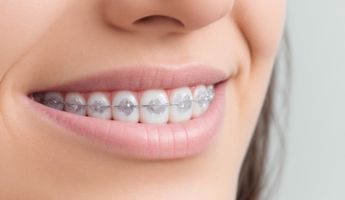
Find the best clinics for Braces in Ha Noi
With Medijump you can browse 3 facilities offering Braces procedures in Ha Noi. The cheapest price available is $1 in Ho Chi Minh City
Braces in Vietnam
Price: $ 1
Braces in Ho Chi Minh City
Price: $ 1
Braces in Ha Noi
Price: $ 1,000
Vietnam offers the best prices Worldwide
Price: $ 1
From 10 verified reviews
ziad sameh, 24 October 2020
I had my wisdom teeth been extracted in the Australian dental clinic with Dr. Van she's so professional. And all the staff are friendly and professional. Highly recommend it
From 6 verified reviews
Wndy, 11 August 2020
I've been to several hospitals in Hanoi over the years, but visited Thu Cuc Hospital for the first time this month. You're given a translator as soon as you arrive and they help every step of the way, so it's really easy to communicate with the staff as well as understanding the recommendations and treatments prescribed. The hospital seems to be run quite efficiently, and everything was "western standard" clean. I saw both a Cuban doctor and a Vietnamese doctor; both did the appropriate exams and tests, and prescribed the recommended treatments (I'm a nurse and I actually do check this stuff before I blindly follow what I'm told by medical staff - something I've especially learned to do here in Vietnam). It seemed to be quite well-equipped, too. So, I'm impressed! Prices are less than in many of the private hospitals and I felt that I was treated very well. I'd definitely return to this hospital when the need for medical care arises again.
Greenfield Dental, located in Cau Giay, Ha Noi, Vietnam offers patients Braces procedures among its total of 29 available procedures, across 4 different specialties. The cost of a Braces procedure ranges from $1,000 to $3,000, whilst the national average price is approximately $14,445,049. There are many specialists available at the Dental, with 9 in total, and they are not accredited by any recognized accreditations institutes
Compare Before & After Photos of _procedure_photos.phpBraces
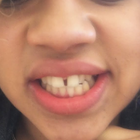
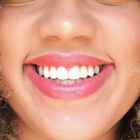
Front view
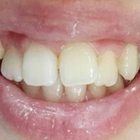
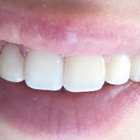
Front view
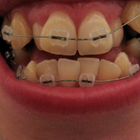

Front view
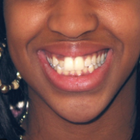
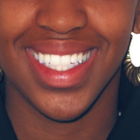
Front view
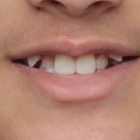
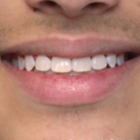
Front view
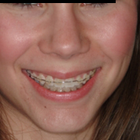
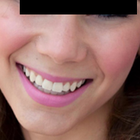
Front view
WHY US?
At Medijump, we're making medical easy. You can search, compare, discuss, and book your medical all in one place. We open the door to the best medical providers worldwide, saving you time and energy along the way, and it's all for FREE, no hidden fees, and no price markups guaranteed. So what are you waiting for?

Free

Best Price

Widest Selection

Risk-Free
What do you need to know about Braces in Ha Noi?
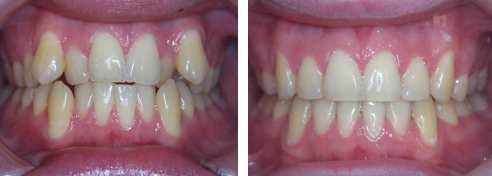
The Braces, commonly referred to as braces, is a mainstream dental technique designed to correct and align a person's dentition. Beneficial for both aesthetic and health reasons, the process involves repositioning misaligned teeth to improve your oral health and overall appearance. Aesthetic benefits aside, the Braces in Ha Noi also assists in enhancing oral hygiene, reducing discomfort when chewing, and even helping in speech correction in certain scenarios.
A thorough understanding of the Braces requires patient awareness regarding the longevity and complexity of the procedure. The dentist assesses the oral condition of an individual and plans a custom treatment accordingly. The treatment is usually achieved through subsequent periodic modifications that help guide teeth to their correct position over time. Your dentist unwaveringly monitors the Braces process, ensuring progress, and addressing any potential complications promptly.
There are several types of braces, including:
- Metal braces –are the traditional braces that come to mind for most people. Metal braces are made of metal brackets and an archwire is used to put pressure on your teeth and jawline, and O-rings are used to connect the brackets and the archwire.
- Ceramic braces – these are the same shape and size of metal braces. However, they are tooth-colored or clear, so they blend in with your teeth.
- Lingual braces – this type of braces are essentially the same as traditional metal braces, except that the wires and brackets are placed on the inside of your teeth.
- Clear aligners – mostly known as Invisalign (the most popular brand of clear aligners), these are removable, clear braces. This type of braces is best for people who only need minor corrections.
Braces are usually used during adolescence. However, more and more people are getting them later on in life.
What is the cost of Braces in Ha Noi?
The cost of Braces or braces in Ha Noi can vary based on a range of factors. These can include the specific type of braces chosen, the severity of the case, the expected duration of the treatment, and the dentist's experience and expertise. The costs can also be influenced by the geographical location. For example, the pricing for this dental intervention could be influenced by the local cost of living and local healthcare standards.
Apart from these specifics, your insurance coverage can also impact the final cost of the treatment. It's vital to verify with your insurance provider if orthodontic treatments like the Braces are covered in your plan and to what extent. Some plans cover only a portion of the treatment, while others may cover more. Speaking with your dentist about costs and payment plans is recommended for a smooth, transparent, and stress-free treatment experience
What does a Braces Procedure Involve?
The Braces involves multiple stages which start with an initial consultation at an accredited clinic to assess the dental needs and the approaches applicable to the case. The first step typically involves a meticulous examination, including an X-ray of your dentition to gain a complete understanding of your oral structure.
Subsequent to the initial consultation, the dentist crafts a specialized plan that outlines the sequence for the Braces. Once the plan is finalized and consented by the patient, implementation begins. The chosen type of braces are put on, which is a process that can last for a few hours. Post-installation, periodic adjustments at regular intervals are crucial to guide the teeth to the desired position gradually.
How Long Should I Stay in Ha Noi for a Braces?
As the Braces involves separate steps over an extended period, individual visits to your dentist or orthodontist are usually brief. Most patients can expect their initial fitting to take around one to two hours, with follow-up adjustment visits usually taking around 15 to 30 minutes.
While the procedure does not require any hospital stay and has minimal impact on your daily activities, it's crucial to note that a full Braces or braces treatment can often last between 18 to 24 months. Therefore, any decision to relocate during the treatment period should be carefully considered.
What's the Recovery Time for Braces in Ha Noi?
The concept of 'recovery time' for the Braces differs from other medical procedures. After your braces have been fitted or adjusted, you may experience general discomfort or difficulty in eating solid food. Usually, this discomfort subsides in about a week.
Contrarily, the overall process of correcting dental alignment using braces isn't quick. Depending on factors such as age, dental condition, and the extent of alignment required, the entire process may last anywhere from 1 to 3 years. As progress varies from case to case, it's best to discuss this with your healthcare provider to understand the timeline for your unique situation.
What's the Success Rate of Braces in Ha Noi?
The Braces enjoys a remarkable success rate. With high patient satisfaction levels reported worldwide, the process has helped many to achieve a desirable and healthier smile. The success of a Braces differs from case to case and depends on the patient's dental condition, age, and the type of braces used.
Another crucial factor that significantly influences the success of the Braces is patient compliance. Adherence to the guidelines provided by the orthodontist, including diligent oral hygiene, attending follow-up appointments, and ensuring regular adjustments are a few ways to optimize treatment outcomes and experience long-term success.
Are there Alternatives to *Treatment Procedure* in Ha Noi?
Yes, there available alternatives to the Braces in Ha Noi. Invisalign, for instance, is a modern orthodontic treatment that, unlike traditional metal braces, uses clear, removable aligners custom-fitted to your teeth. This alternative has grown popular due to its near-invisible appearance, making the treatment less noticeable.
Another alternative is the lingual braces; these are essentially similar to traditional braces but are placed on the inward-facing side of your teeth, making them less visible when you speak or smile. Dental surgery is a more drastic option, usually considered only in extreme cases when orthodontic treatments alone may not be sufficient.
It's important to discuss these alternatives with your dentist and consider all aspects such as costs, duration, maintenance, and visual appearance before deciding on the most suitable option for you.
What Should You Expect Before and After the Braces?
WebMD, could be a few years or indefinitely. Many patients have reported heightened self-confidence and improved oral health, making the Braces a worthy investment, which has made a mark in the field of Health and wellness.
What are some potential complications of the Braces in Ha Noi?
While the Braces is generally safe, like any dental procedure, there can be potential complications such as discomfort after adjustment, difficulty in brushing, loss of calcium from the teeth (tooth decalcification), and shortening of tooth roots. Rarely, patients may also experience allergic reactions to some of the metals used in braces.
Difficulty brushing could potentially lead to an accumulation of plaque, leading to gum disease if not adequately managed. As such, engaging in regular oral hygiene practices is of utmost importance. If you notice any of these issues, it is crucial to raise them with your dentist as soon as possible
What is the Importance of Aftercare for Braces?
Aftercare plays a crucial role in the success and longevity of the results of the Braces. Once the braces are removed, you're generally required to wear a retainer, which your dentist will custom-fit for you. A retainer helps in maintaining and stabilizing your teeth in their new position. Neglecting to wear the retainer can lead to your teeth shifting back to their original position, reducing the efficiency of the treatment.
In addition to using a retainer, maintaining good oral hygiene throughout the course of wearing braces and even afterward is necessary. Oral care routines such as brushing your teeth twice a day, flossing regularly, and having routine dental checkups will help ensure the health of your teeth and gums long after the Braces.
A well-nourished diet that limits sugary and starchy foods is recommended to further protect your oral health.
What are the Differences Between Adult and Children's Braces?
When comparing adult and children's braces, the primary distinction is rooted in the biological differences between kids and adults. As children’s jaws are still growing, it may be easier to influence the position and alignment of teeth, making children more responsive to the Braces.
However, with adults, the Braces might take longer as their jaws are already fully developed, and shifting teeth can be more complex. So, while braces are effective at any age, the duration of treatment may differ between adults and children.
Even though the Braces will differ among age groups, the critical point remains that adults, just like children, can still benefit from braces in terms of improved oral health, better dental function and enhanced self confidence, as mentioned by Mayo Clinic.
What are the Different Types of Braces?

There are several types of braces or Braces options available to cater to an array of needs and preferences. Traditional braces are the most popular, consisting of metal brackets that are glued to your teeth and linked with wires. They're now lighter and more flexible, reducing discomfort than previous versions.
Ceramic braces are similar to traditional ones, but they use tooth-colored or clear brackets to merge more naturally with your teeth. Lingual braces are metal braces placed on the inside of your teeth making them less noticeable. Lastly, Invisalign braces are clear, custom-fit removable aligners that are almost invisible, making them very popular among adults and teens who prioritize aesthetics.
It's important to remember that each type of Braces has its pros and cons: while some might be more aesthetically pleasing, others could be more efficient in treating complicated cases. Consulting with your dentist will allow you to make an informed decision based on your unique case.
What Kind of Maintenance Does Braces Require?
Maintenance during the Braces involves maintaining a high level of oral hygiene. Because braces can lodge food particles, frequent and thorough brushing is necessary to prevent plaque build-up leading to tooth decay or gum disease. The use of special brushes and floss can help get to those hard-to-reach places around brackets and wires.
Additionally, periodic appointments with your orthodontist are obligatory to keep track of progression and make necessary adjustments. Furthermore, certain types of food are to be avoided as they can break wires or brackets. These typically include hard or sticky foods like candy, popcorn, and nuts. Your dentist will provide specific guidelines customized to your Braces.
Whilst the information presented here has been accurately sourced and verified by a medical professional for its accuracy, it is still advised to consult with your doctor before pursuing a medical treatment at one of the listed medical providers
No Time?
Tell us what you're looking for and we'll reachout to the top clinics all at once
Enquire Now

Popular Procedures in Ha Noi
Prices Start From $1

Prices Start From $1

Prices Start From $48

Prices Start From $1

Prices Start From $1

Prices Start From $1

Prices Start From $11

Prices Start From $1

Prices Start From $45

Recommended Medical Centers in Ha Noi for Braces

- Interpreter services
- Translation service
- Religious facilities
- Medical records transfer
- Medical travel insurance
- Health insurance coordination
- TV in the room
- Safe in the room
- Phone in the room
- Private rooms for patients available

- Interpreter services
- Translation service
- Religious facilities
- Medical records transfer
- Medical travel insurance
- Health insurance coordination
- TV in the room
- Safe in the room
- Phone in the room
- Private rooms for patients available

- Interpreter services
- Translation service
- Religious facilities
- Medical records transfer
- Medical travel insurance
- Health insurance coordination
- TV in the room
- Safe in the room
- Phone in the room
- Private rooms for patients available

- Interpreter services
- Translation service
- Religious facilities
- Medical records transfer
- Medical travel insurance
- Health insurance coordination
- TV in the room
- Safe in the room
- Phone in the room
- Private rooms for patients available

- Interpreter services
- Translation service
- Religious facilities
- Medical records transfer
- Medical travel insurance
- Health insurance coordination
- TV in the room
- Safe in the room
- Phone in the room
- Private rooms for patients available

- Interpreter services
- Translation service
- Religious facilities
- Medical records transfer
- Medical travel insurance
- Health insurance coordination
- TV in the room
- Safe in the room
- Phone in the room
- Private rooms for patients available

- Interpreter services
- Translation service
- Religious facilities
- Medical records transfer
- Medical travel insurance
- Health insurance coordination
- TV in the room
- Safe in the room
- Phone in the room
- Private rooms for patients available

- Interpreter services
- Translation service
- Religious facilities
- Medical records transfer
- Medical travel insurance
- Health insurance coordination
- TV in the room
- Safe in the room
- Phone in the room
- Private rooms for patients available
Braces in and around Ha Noi
About Hanoi
Hanoi is Vietnam’s capital and the second-largest city by population. Located on the banks of Red River, it’s the major metropolitan and political center of the country. This chaotic and busy city is brimming with history, culture, and character. Known as one of the most ancient capitals in the world, the city charms its visitors with well-preserved colonial buildings, pagodas, and museums. Foreign tourists normally travel to the city to enjoy its history, but today, some of these foreign tourists are heading to its clinics and hospitals. Affordable healthcare and high-quality medical centers are the main factors that have attracted medical tourists and the most sought-after treatment is cosmetic surgery and dentistry.
Popular Parts of Hanoi
Hanoi offers many kinds of attractions for its visitors. The most popular part of the city is the Old Quarter, where visitors can experience Asia at its rawest. This 2000-year-old street is packed with over 1000 merchants. In this area, you can also get a glimpse of the strong influence the French had via its architecture. The area of Ba Dinh is also popular among foreign tourists. It’s the center of governance in Vietnam, as well as home to numerous historic sites, such as the One Pillar Pagoda and Hanoi Flag Tower. Those who are fascinated with Vietnam’s history and culture should visit the Temple of Literature, Quan Su Pagoda, or explore its many museums. Some of the popular museums are the Vietnam Women’s Museum, Army Museum, and the Vietnam National Museum of Fine Arts.
Transport in Hanoi
Noi Bai International airport is the biggest airport in Vietnam that serves both domestic and international flights to major cities in Asia and Europe. Several budget airlines operate from this airport, such as Jetstar Pacific and VietJet Air. Various modes of transport are available to get around the city. Taxis can be hailed from the street or by phone and are generally reliable. Motorcycle taxis and cyclo (similar to trishaw) are two of the most affordable options. Buses are also available. However, the easiest way to get around is by Grab motorbikes, which is similar to Uber.
Visas in Hanoi
Holders of passports issued to 24 countries, including Cambodia, Denmark, and the UK, are allowed to visit and stay in Hanoi for up to 90 days without a visa. Vietnam has introduced an electronic visa system in 2017, which is available for citizens of 81 countries, including all EU countries, Australia, and Japan.
Weather in Hanoi
Hanoi experiences a warm and humid subtropical climate. The summer, starting from late April, is characterized by sunny days and heatwaves, with occasional rain. The average temperature is around 27.5°C. Winter, from December to January, has a lot of cold days and the temperature can drop to 7°C. Autumn and spring have pleasant weather.
Additional Info
- Local Currency: Vietnamese Dong (VND) is the official currency, and 1 USD will get you around 23,270 VND.
- Money & Payments: ATMs can be found easily around the city. Cash is king, but credit cards are accepted in various hotels. Tipping is not expected but appreciated.
- Local Language: Vietnamese is the official and most spoken language in Hanoi. English is widely spoken, particularly in tourist areas.
- Local Culture and Religion: Most people in Hanoi follow Vietnamese folk religion or are not religious. Other religions, such as Buddhism and Christianity, are freely practiced.
- Public Holidays: Hanoi celebrates several public holidays, including New Year’s Day, Tet Holiday, Hung Kings Temple Festival, Reunification Day, International Labor Day, and National Day.
Popular Searches
- Plastic Surgery in Thailand
- Dental Implants in Thailand
- Hair Transplant in Thailand
- Breast Augmentation Thailand
- Gastric Sleeve in Thailand
- Gender Reassignment Surgery in Thailand
- Laser Hair Removal in Bangkok
- Botox in Bangkok
- Dermatology in Bangkok
- Breast Augmentation in Bangkok
- Coolsculpting in Bangkok
- Veneers in Turkey
- Hair Transplant in Turkey
- Rhinoplasty in Turkey
- Stem Cell Therapy in Mexico
- Rhinoplasty in Mexico
- Liposuction in Mexico
- Coolsculpting in Tijuana
- Rhinoplasty in Korea
- Scar Removal in Korea
- Gastric Sleeve in Turkey
- Bone Marrow Transplant in India
- Invisalign in Malaysia
- Plastic Surgery in the Dominican Republic
- Tummy Tuck in the Dominican Republic
- Plastic and Cosmetic Surgery in Poland
- Rhinoplasty in Poland
- Hair Implant in Poland
- Dental Implants in Poland
- IVF in Turkey


